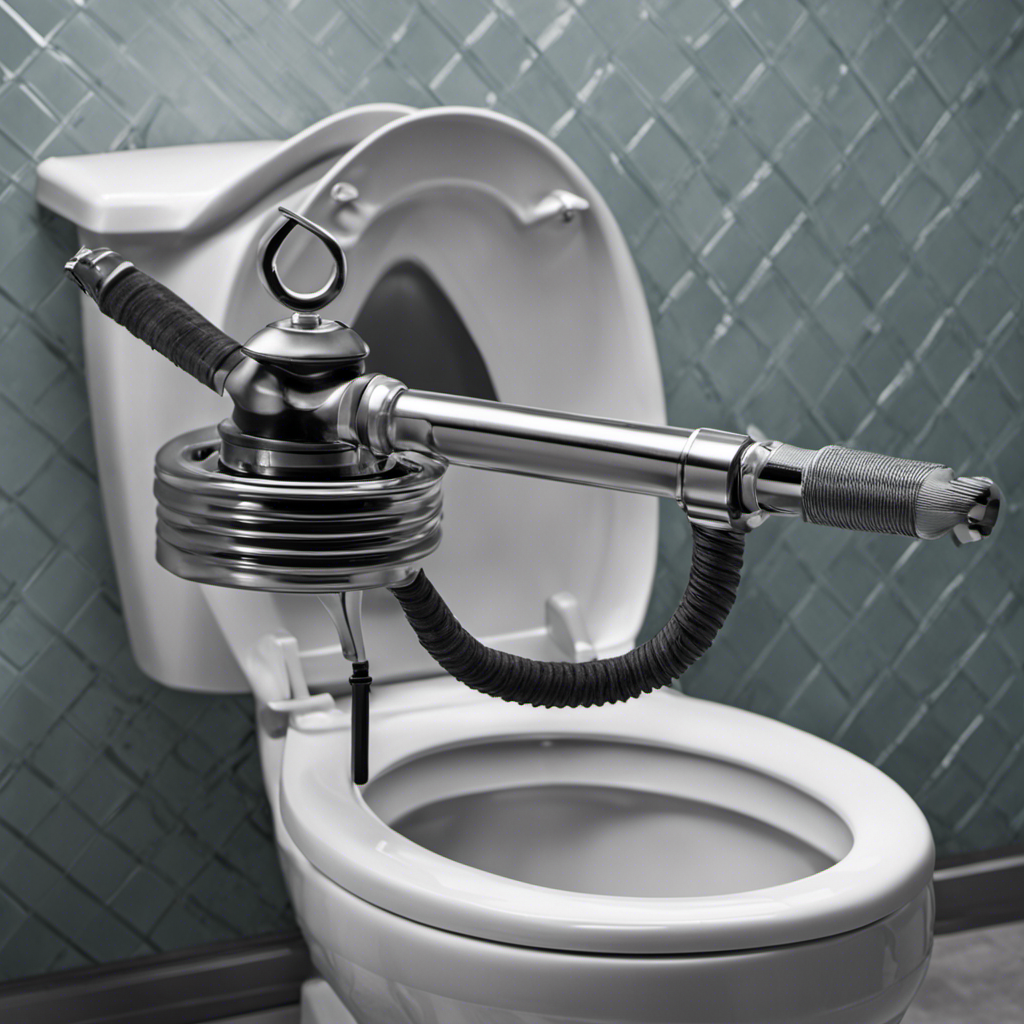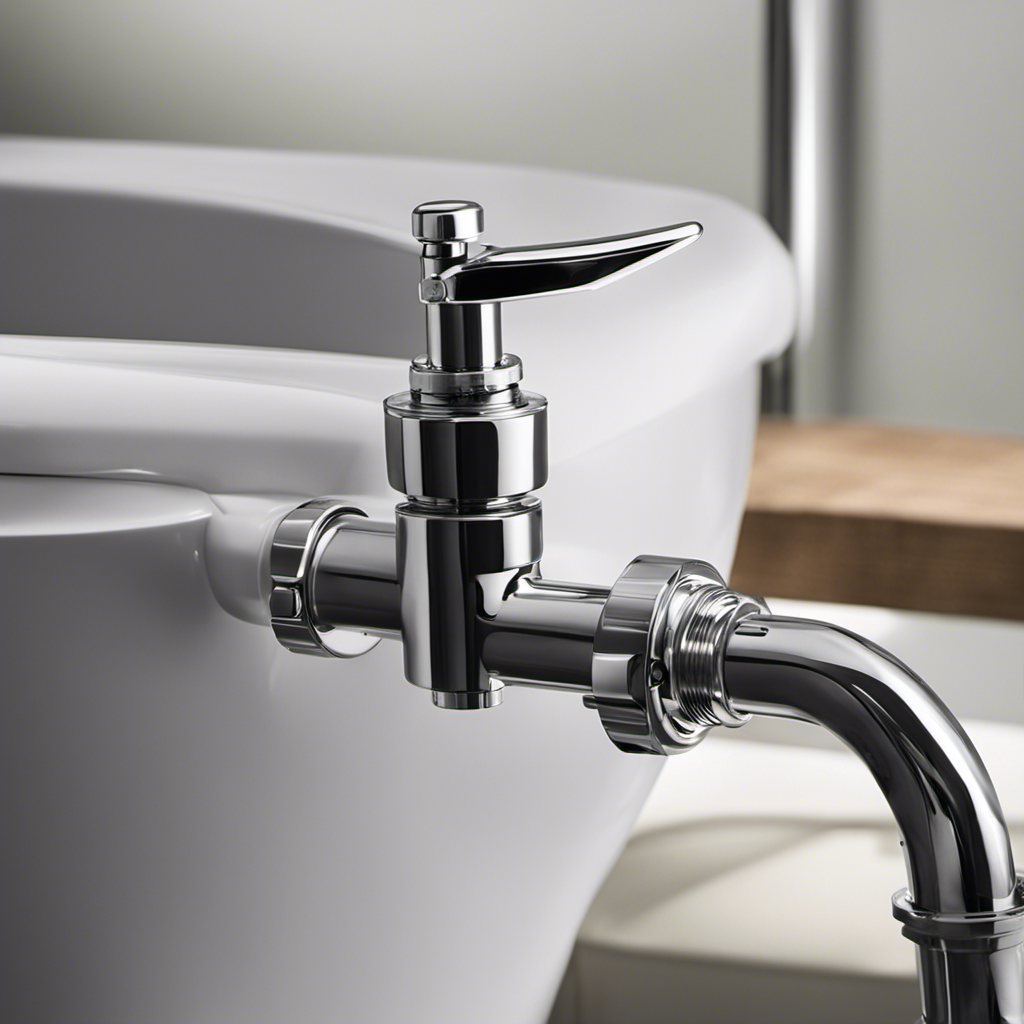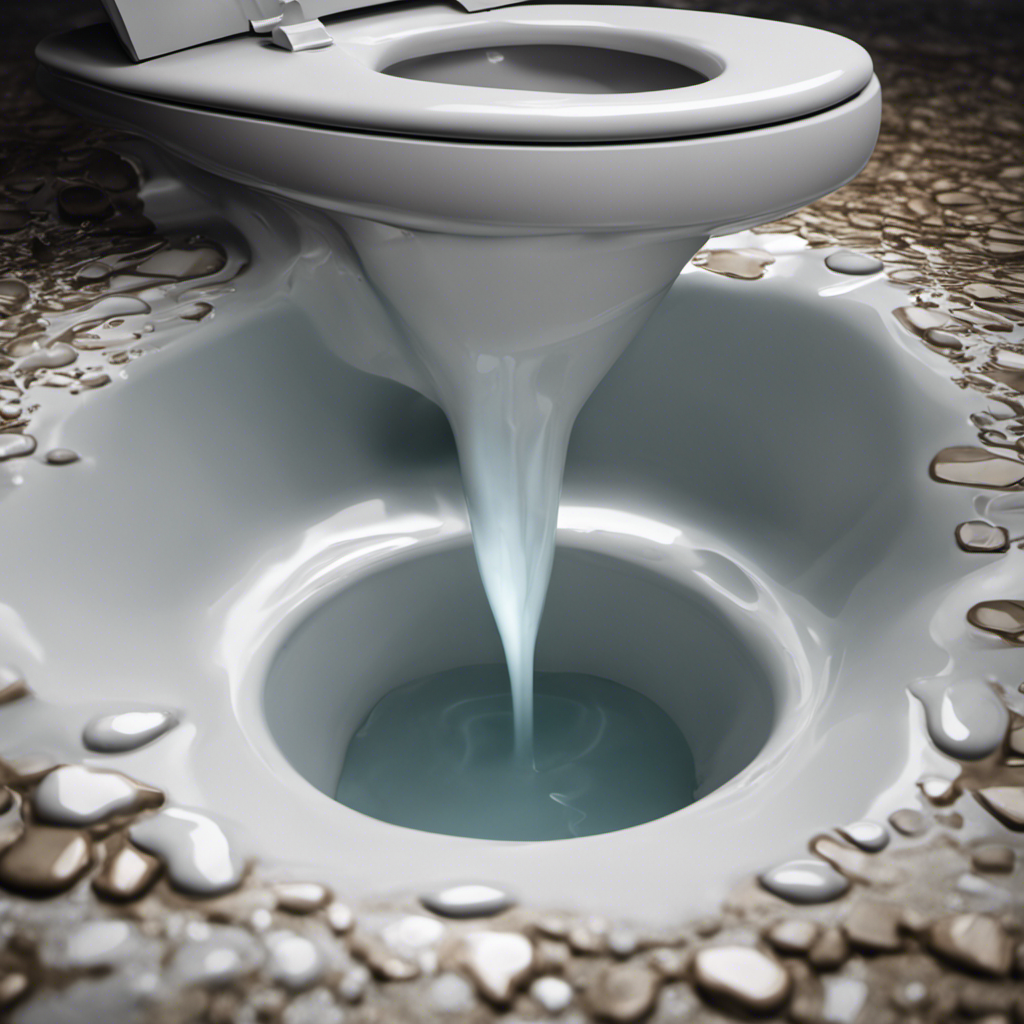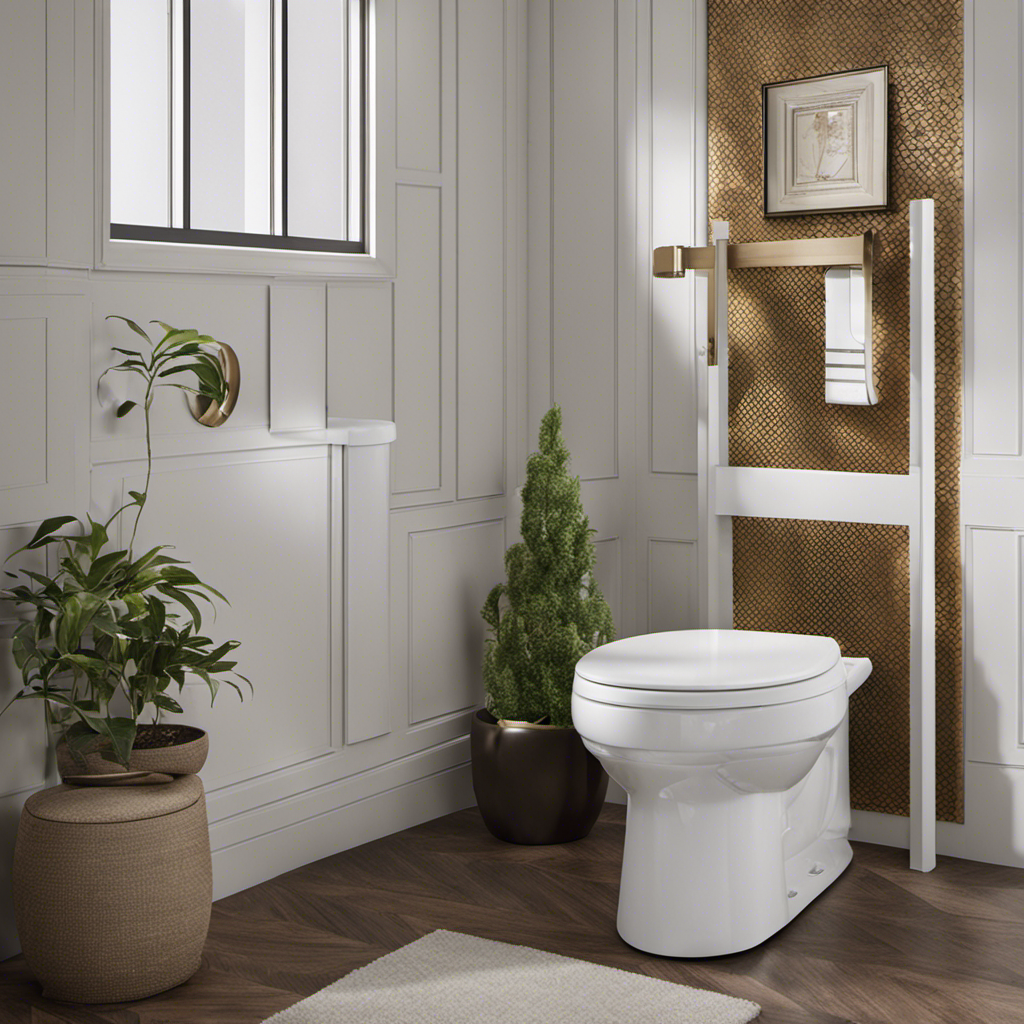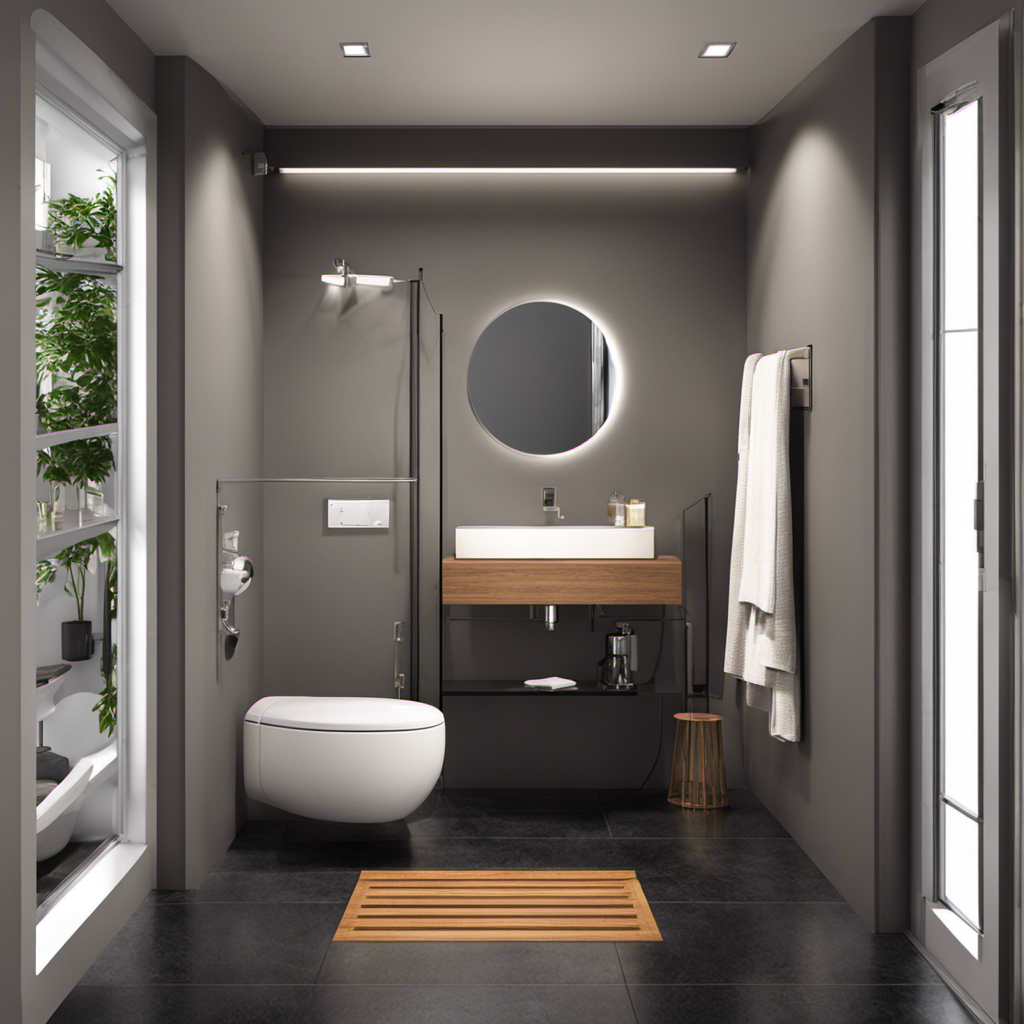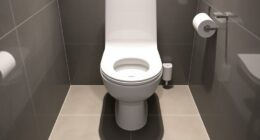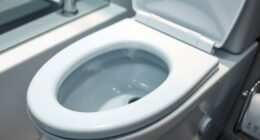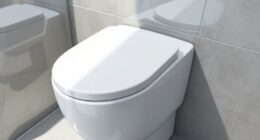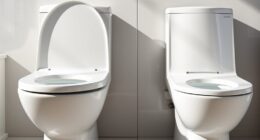Have you ever found yourself dealing with a stubborn toilet clog that just won’t go away?
Well, fear not, because I’m here to guide you through the process of augering a toilet.
With just a few simple steps and the right tools, you’ll be able to tackle even the most challenging clogs.
In this article, I’ll walk you through the process, troubleshoot common issues, and provide tips for preventing future clogs.
So let’s get started and say goodbye to those pesky toilet clogs once and for all!
Key Takeaways
- There are two main types of toilet augers: closet augers and handheld augers.
- Closet augers are longer and more suitable for deep clogs in the toilet drain.
- Handheld augers are shorter and better for clogs near the toilet bowl.
- To effectively use a toilet auger, ensure there is enough water in the bowl, insert the auger cable into the drain hole, rotate the handle clockwise to push the cable further into the drain, and slowly retract the auger cable while rotating the handle to prevent debris from coming back up.
Required Tools for Augering a Toilet
You’ll need a few tools to auger a toilet properly. One of the most important tools is a toilet auger. There are two main types of toilet augers: closet augers and handheld augers. Closet augers are longer and more suited for clearing clogs deep in the toilet drain, while handheld augers are shorter and better for clogs near the toilet bowl.
To use a toilet auger, start by inserting the auger cable into the toilet bowl until it reaches the clog. Then, rotate the handle clockwise to break up the clog. Once the clog is cleared, slowly retract the auger cable while continuing to rotate the handle. This will prevent any debris from coming back up.
With the right tools and proper technique, you can easily unclog a toilet using a toilet auger. Now, let’s move on to the step-by-step guide to augering a toilet.
Step-by-Step Guide to Augering a Toilet
First, make sure there is enough water in the bowl. This is crucial for the toilet auger technique to work effectively.
Here is a step-by-step guide to using a toilet auger:
- Insert the auger cable into the drain hole of the toilet bowl.
- Rotate the handle of the auger in a clockwise direction to push the cable further into the drain.
- Continue rotating the handle and pushing the cable until you feel resistance.
- Once you encounter the clog, apply steady pressure while continuing to rotate the handle to break up the obstruction.
There are two main types of toilet augers: the closet auger and the handheld auger. The closet auger is specifically designed for toilets and has a longer cable, while the handheld auger is more versatile and can be used for sinks and tubs as well.
Now that you know how to use a toilet auger, let’s move on to troubleshooting common toilet clogs.
Troubleshooting Common Toilet Clogs
To troubleshoot common toilet clogs, start by checking if there is any visible blockage in the toilet bowl. This could be caused by items such as excessive toilet paper, sanitary products, or even foreign objects that accidentally fell into the bowl.
Signs of a clogged toilet include water rising to the brim when you flush, slow drainage, or a complete inability to flush. If there is a visible blockage, try using a plunger to dislodge it. If that doesn’t work, you may need to use a toilet auger to remove the clog.
In the next section, I will provide tips for preventing future toilet clogs, so you can avoid the hassle of troubleshooting.
Tips for Preventing Toilet Clogs
If you want to prevent future toilet clogs, it’s important to be mindful of what you flush down the toilet. Here are some tips for proper toilet maintenance and preventing plumbing emergencies:
-
Only flush toilet paper: Avoid flushing any other material, such as baby wipes, cotton balls, or sanitary products. These can easily cause clogs in your plumbing system.
-
Use less toilet paper: Excessive amounts of toilet paper can also lead to clogs. Remember to use only what is necessary to avoid overloading the system.
-
Avoid flushing chemicals: Chemical cleaners, medications, and other household chemicals should never be flushed down the toilet. These can damage your plumbing system and harm the environment.
-
Educate children: Teach your children about proper toilet etiquette and what should and should not be flushed. This will help prevent any accidental clogs caused by flushing toys or other objects.
Safety Precautions for Augering a Toilet
Remember, it’s important to take safety precautions when using an auger to unclog your toilet. To ensure your well-being, make sure to wear the proper safety gear, including gloves and safety goggles, to protect yourself from any potential hazards. Additionally, it’s crucial to follow the proper technique when using an auger. Start by inserting the auger into the toilet bowl and turning the handle clockwise to break up the clog. Be sure to apply steady, even pressure to avoid any splashing or further damage. Once you feel resistance, gently pull the auger out and discard any debris. Repeat the process if necessary. By following these safety precautions and using the correct technique, you can effectively unclog your toilet without any mishaps.
| Safety Gear | Proper Technique |
|---|---|
| Gloves | Insert auger into toilet bowl |
| Safety goggles | Turn handle clockwise to break up clog |
| Apply steady, even pressure | |
| Gently pull auger out when resistance is felt | |
| Repeat process if necessary |
Conclusion
In conclusion, augering a toilet can be a simple yet effective solution to stubborn clogs. By following the step-by-step guide and using the required tools, you can easily tackle this plumbing issue on your own.
Remember to troubleshoot common toilet clogs and implement preventive measures to avoid future incidents.
Lastly, always prioritize safety precautions when handling any plumbing task. As the saying goes, ‘An ounce of prevention is worth a pound of cure.’ So take the necessary steps to keep your toilet running smoothly and clog-free.
